
Pros
- Vegan leather design
- NFC functionality –
- Decent cameras
Cons
- Slow performance
- Dull screen
- Only one software update planned
Motorola’s new Moto G 5G is agonizingly close to being the right option for someone looking for a $200 phone.
This year the MotoG 5G comes with refreshed design as well as NFC for contactless payments, and largely sticks to the features of its predecessor, the $250 Moto G 5G. Among the most notable features it inherits from the 2023 version is a 120Hz refresh rate, making it one of the first sub-$200 phones to provide super smooth screen animations. Plus, it takes decent photos for a phone of its price. The new phone arrives alongside the $300 Moto G Power 5G for 2024.
But as a daily device, this phone is noticeably underpowered. It does indeed run all the apps I need and can support my usual multitasking routine of listening to music while texting or reading. But it’s painfully obvious that the 4GB of included RAM is stretched to its limit, leading to multiple instances of reloading when switching between apps like Messenger, Microsoft Bing and a game.
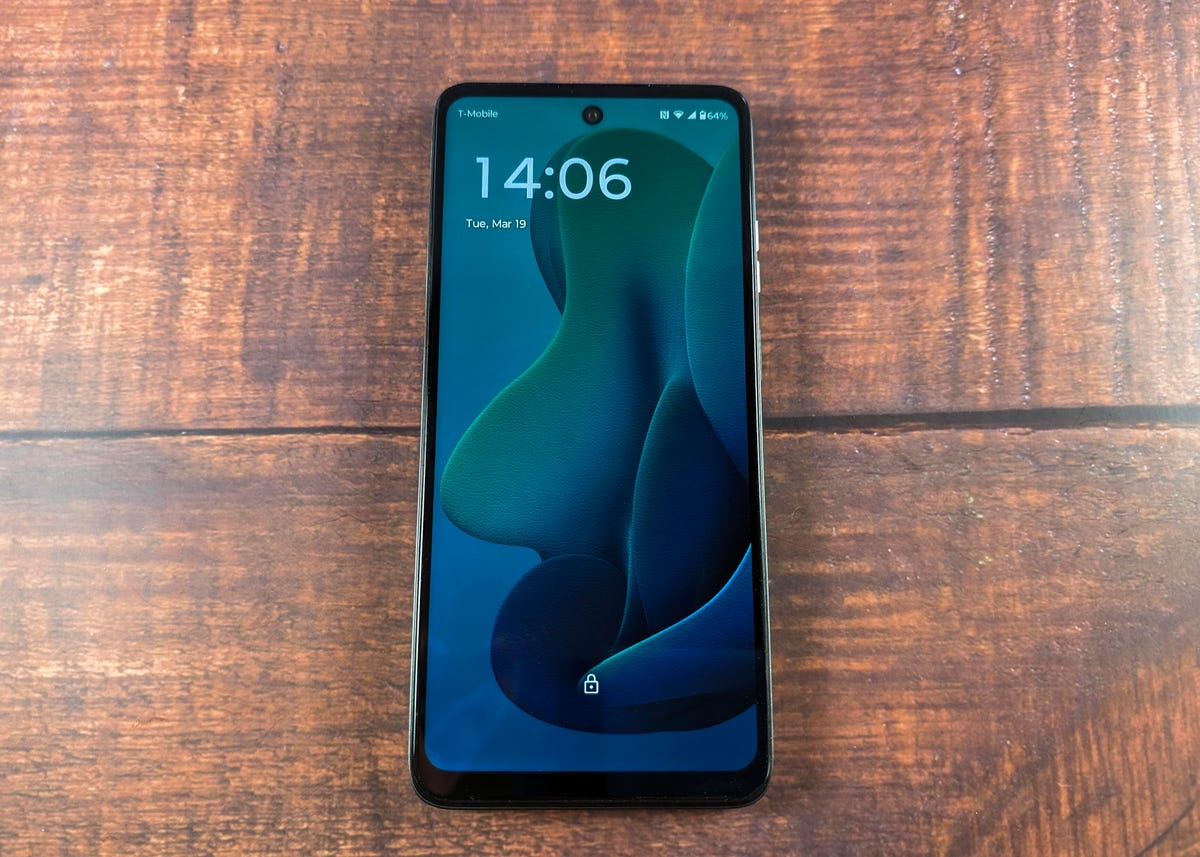
The 6.6-inch display on the Moto G 5G runs at a 720p resolution with a 120Hz refresh rate.
Motorola hasn’t budged on its software update policy for Moto G phones. It promises just one major update to the Moto G 5G and three years of security updates. Even though this type of policy is normal for this price range, it’s quickly becoming outdated now that Samsung and Google offer high-end phones seven years of updates. This has trickled down to Samsung’s $200 Galaxy A15, which is getting four years of software updates and five years of security updates.
Overall, I can recommend the Moto 5G for those who just want basic functionality at a cheap price. But you’ll get significantly better performance by paying a bit more.
The Moto G Power 5G Looks Good in ‘Vegan’ Leather and Lilac
Moto G 5G design and display
The Moto G 5G has a more refined design compared to last year’s model thanks to its vegan leather back cover and a sage green color. It’s notably more comfortable than the slippery plastic build that’s more common on $200 phones. Motorola says the design is “water-repellent,” which in this case means it can handle light spills or rain but isn’t designed for water submersion.
A combined SIM card and microSD card slot can be found on the side of the phone, along with a volume rocker and power button that doubles as a fingerprint sensor. There’s also a headphone jack, making the Moto G 5G one of the few devices you can still plug your headphones into.
The Moto G 5G’s stereo speakers get quite loud, and there’s a Dolby Atmos app for enabling spatial audio and toggling equalizer settings for movies, music, podcast, gaming and creating a custom mode. I enjoyed listening to music with the phone’s speakers, but I wouldn’t say they were dynamic enough to provide much emphasis to a song’s bass line. Yet it’s a clear step above other comparably priced phones that only include a single speaker.
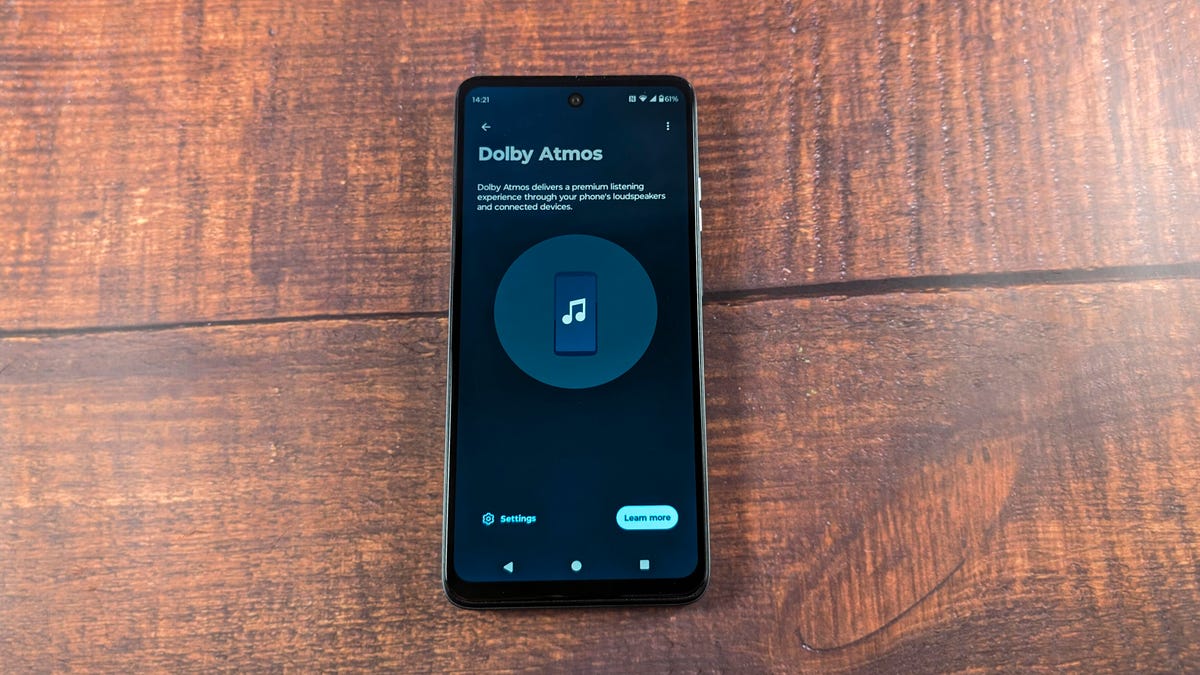
The Dolby Atmos app lets you swap between different equalizer settings along with spatial audio.
The phone has a 6.6-inch 720p display, which includes the aforementioned 120Hz refresh rate. Those smooth animations are noticeable and helpful when scrolling through webpages and playing games, but the low-resolution screen can’t display a broad range of colors for HDR content. Videos and games look fine, but the more muted colors make it clear that Motorola compromised on the display to maintain the Moto G’s low price. While that’s not unheard of in this price range, rival TCL includes limited HDR settings on its sub-$200 phones through its NxtVision mode. It would be nice to see Motorola create a similar setting. The phone does however, let you choose between “Natural” and “Saturated” display settings for a slight vividness.
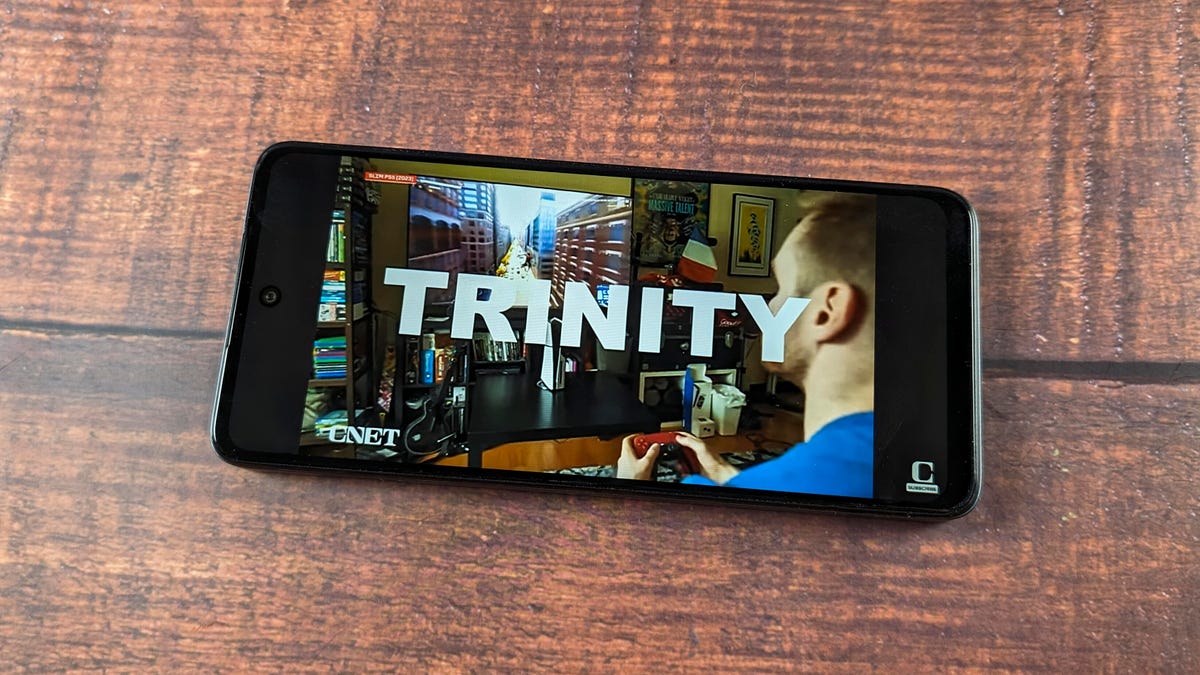
The Moto G 5G’s display feels muted.
Moto G battery, performance and software
The Moto G 5G has excellent battery life, even if that’s now fairly standard across phones in this price range. The phone’s 5,000-mAh battery easily lasts for a day and a half. On a day when I clocked three hours of screen time, I still had 54% of my battery left by bedtime. I managed to get roughly 4 hours the next day before it died.
However, recharging that battery takes time. While the Moto G’s 18W charging speed replenished the phone quickly when the device was turned off (0% to 36% in 30 minutes), it slowed down significantly when I charged the phone while it was powered on. Following that charging test, it took an additional 2 hours to get the phone to 94%. Motorola also doesn’t include a charger in the box for the unlocked model, but for certain carriers will bundle a 10-watt charger.
The Moto G 5G ships with Android 14. Even though it will get only one update to the next edition of Android, Motorola provides a largely clean operating system with some optional extras. That includes Moto Gestures, which lets you twist to open the camera and chop to use the flashlight. Just like the iPhone, there’s a double tap feature that makes it possible to perform an action by tapping the back of the phone.
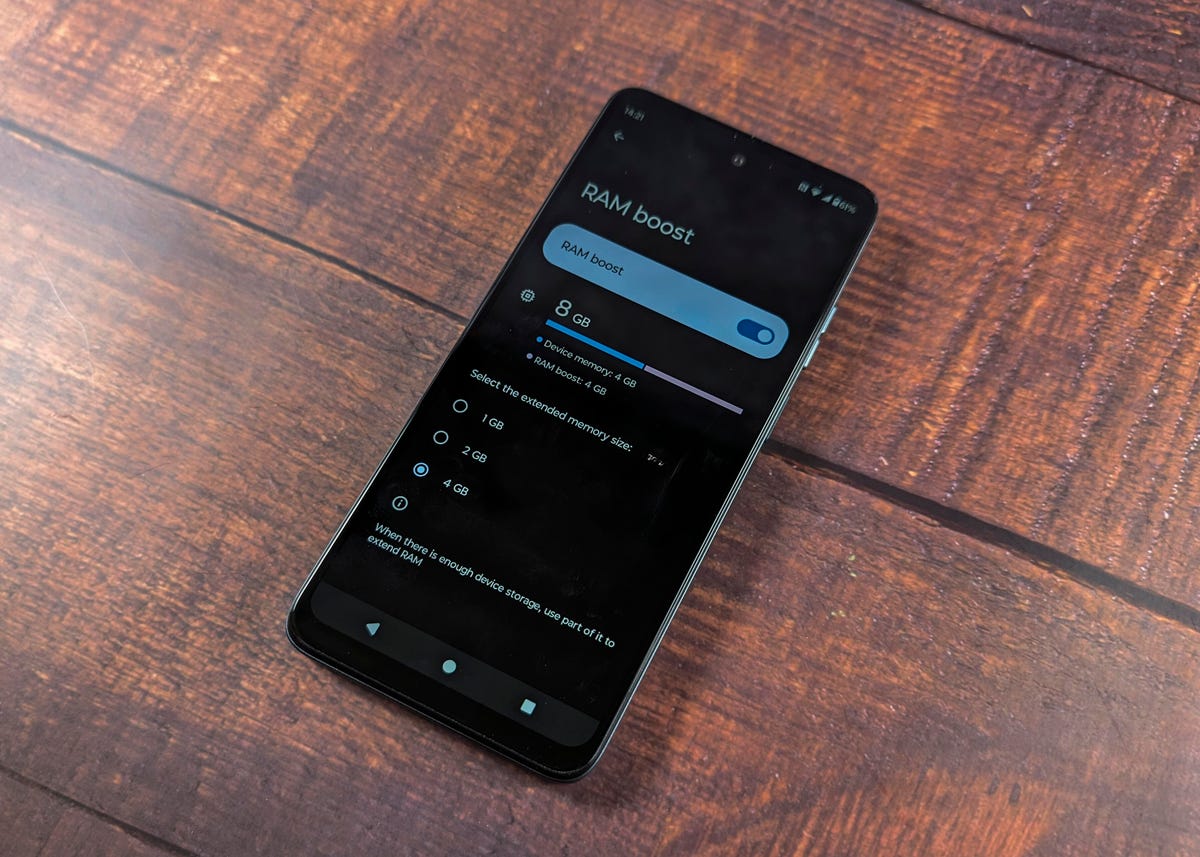
The Moto G 5G allows you to dip into the internal storage to increase the memory on the phone. It’s a helpful feature but I wouldn’t say it provides a similar experience to a phone with 8GB of memory.
Even though the operating system itself isn’t messed with by Motorola, the phone does come preinstalled with third-party apps and widgets that I do find to intrude on using the phone the way I wanted to. Luckily, you can uninstall or opt out of many of these apps and widgets. But it took several days before I realized I had to remove certain widgets to stop some unwanted notifications. This feels like a bigger problem than usual because cheaper devices like the Moto G are likely being purchased by people hoping for a simpler phone experience.
As I mentioned earlier, the Moto G 5G is sluggish when it comes to performance. Even though Motorola includes a RAM boost feature that doubles its onboard memory to an experience more akin to 8GB, this device isn’t great at multitasking beyond listening to music while texting and reading. RAM boost is turned on by default, starting with a “6GB”-like experience by dipping slightly into the phone’s onboard storage. When I ramped it up to “8GB” it took an additional gigabyte of space, which is well worth it even if the gains are only slight. Storage isn’t an issue thanks to the roomy 128GB of space — up from the 64GB of last year’s $200 Moto G Stylus while matching last year’s Moto G 5G — with the option to expand up to 1TB with a microSD card.
In a performance benchmark test called Geekbench 6, the phone performed better than last year’s Moto G 5G and the Samsung Galaxy A14, likely thanks to its Qualcomm Snapdragon 4 Gen 1 processor. It also scored substantially higher than last year’s $200 Motorola phone, the Moto G Stylus. But the phone compared similarly to last year’s Moto G 5G on the graphically intense 3DMark Wild Life Extreme benchmark. We haven’t tested Samsung’s $200 Galaxy A15 yet, but we will be comparing the two when we get the chance to run that rival budget phone through our review process.
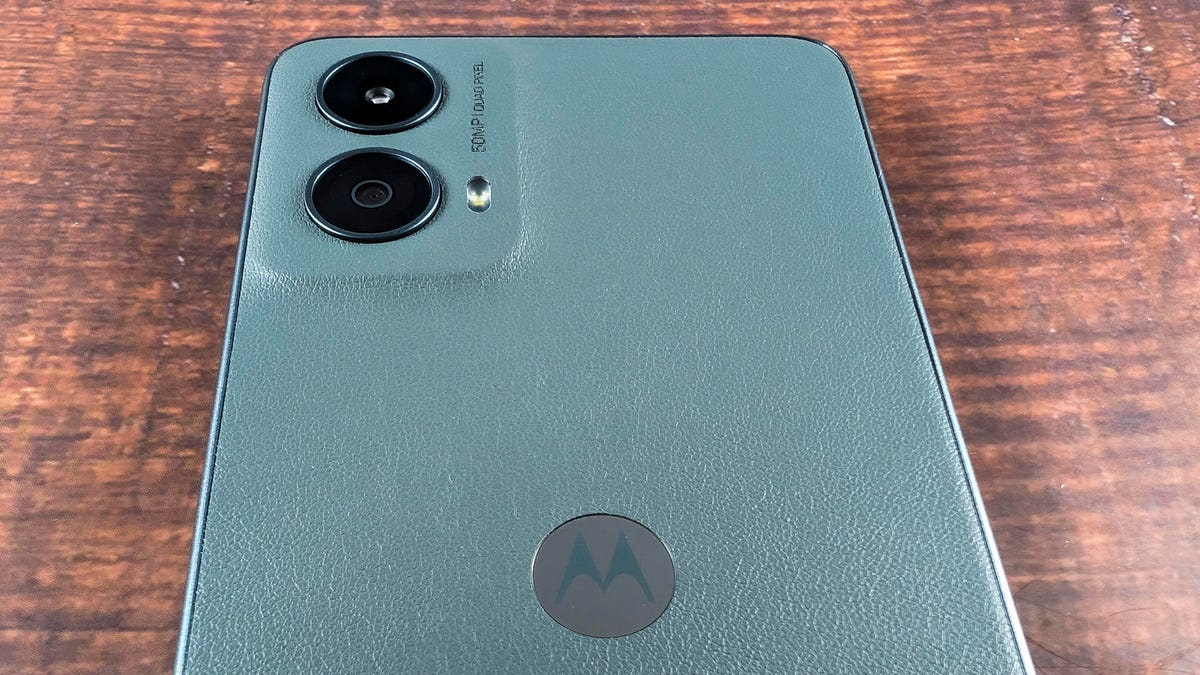
The Moto G 5G’s camera system includes a 50-megapixel main lens and a 2-megapixel macro lens.
Moto G 5G cameras
The cameras take good photos, and that’s a major plus for anyone considering this phone. During my week of testing, I shot a sunset at New York’s Long Island Railroad station in Jamaica, Queens, food photos at the Wegmans grocery store in Astor Place and a little bit of nighttime photography at the Queensboro Plaza subway station.

A sunset photo taken on the Moto G 5G at the Jamaica, Queens station in New York.

The Queensboro Plaza subway station taken at night.
A consistent theme I found across many photos, whether taken by that 50-megapixel main camera or the 8-megapixel front-facing camera, is they have great color accuracy but low detail.

Apples at the Wegmans grocery store taken on the Moto G 5G.

Shrimp cocktail taken on the Moto G 5G.

A photo taken on the front-facing camera of the Moto G 5G.
A set of apples at the grocery store shows clearly defined shades of red reflecting the different types of apples, for example. You can see the the flecks of spices on the premade shrimp cocktails I photographed at Wegmans. A quick selfie I took in Astor Place on a cloudy day focused well on my face and has some details of my skin.

The entrance to Wegmans taken at 3x zoom.
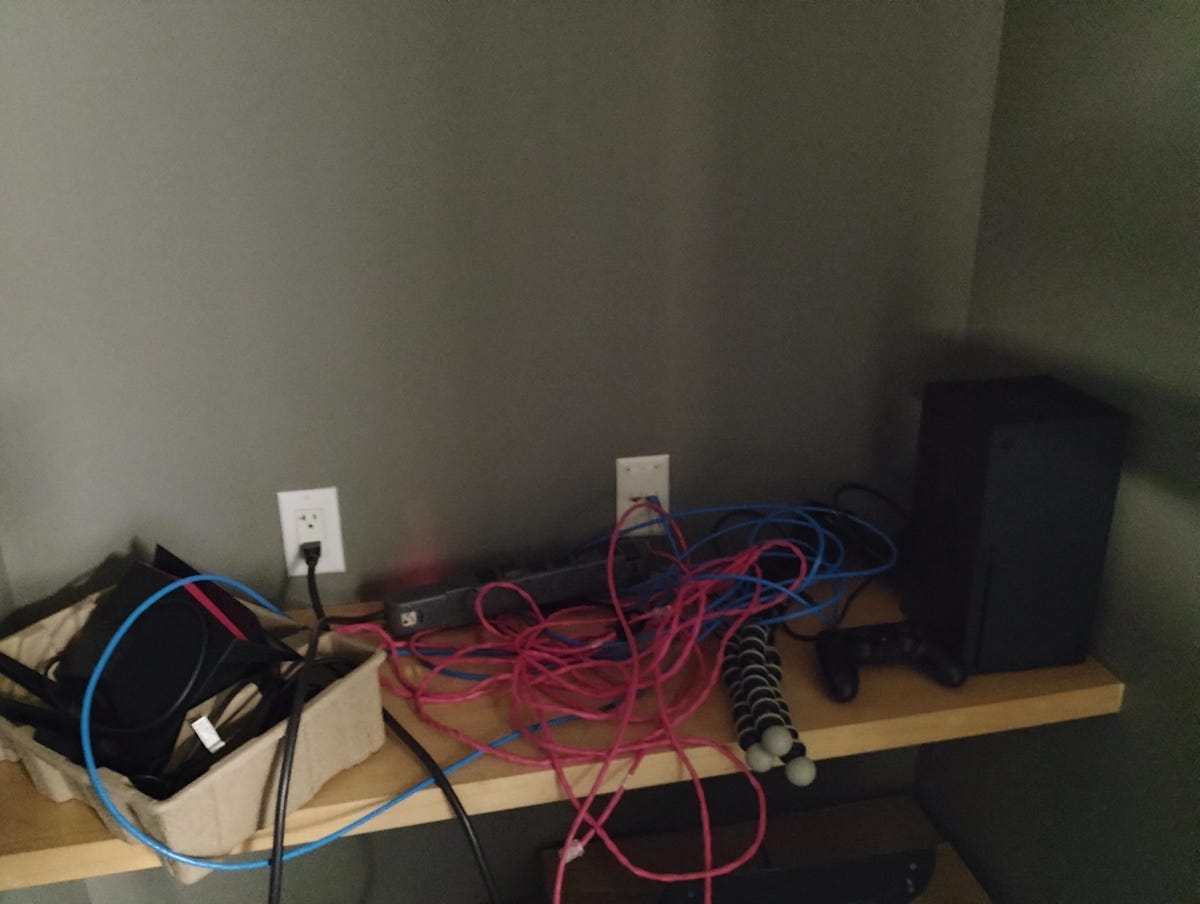
A night mode photo taken in a dark storage area in CNET’s office.
But if you really zoom in on these photos, things get blurry. My 3x zoom photos of the entrance of Wegmans have artifacting, as does the night mode photo I took of a dark storage room at CNET’s office.
The phone also includes a 2-megapixel macro lens meant for close up photos, but these images just don’t provide enough detail to make the effort worth it.
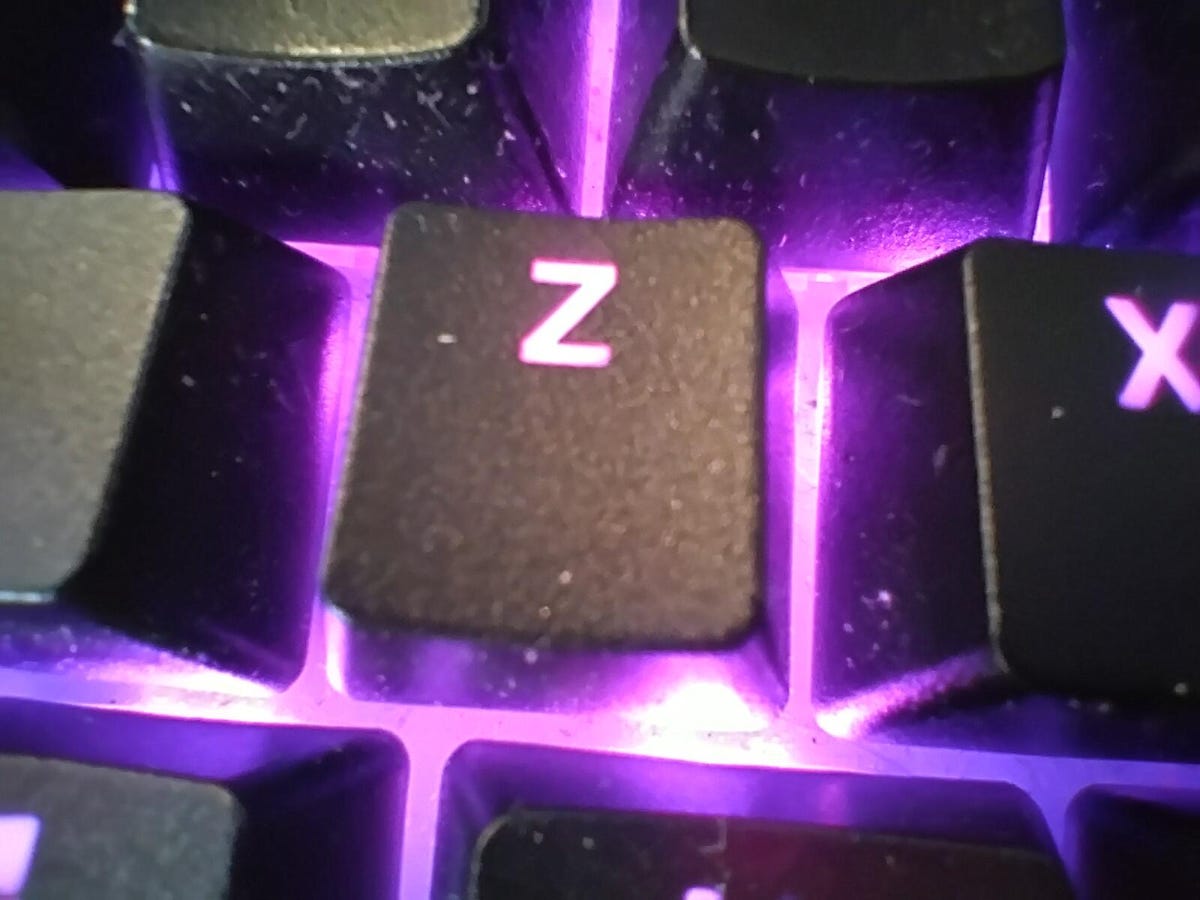
The 2-megapixel macro lens is meant for closeup photography, but you can see the blurriness.
These photos compare favorably to the Galaxy A14 5G, making the Moto G 5G perform averagely for the price range.

The grass wall at CNET’s office taken on the Moto G 5G.

The Samsung Galaxy A14 5G’s depiction of the grass wall in CNET’s office.
As long as you mostly take simple photos without much of a zoom, you’ll probably be satisfied with the Moto G 5G’s camera. Video on the other hand, with a 720p resolution and a frame rate of just 30 frames per second, isn’t suitable for much more than a quick casual video of your cat.
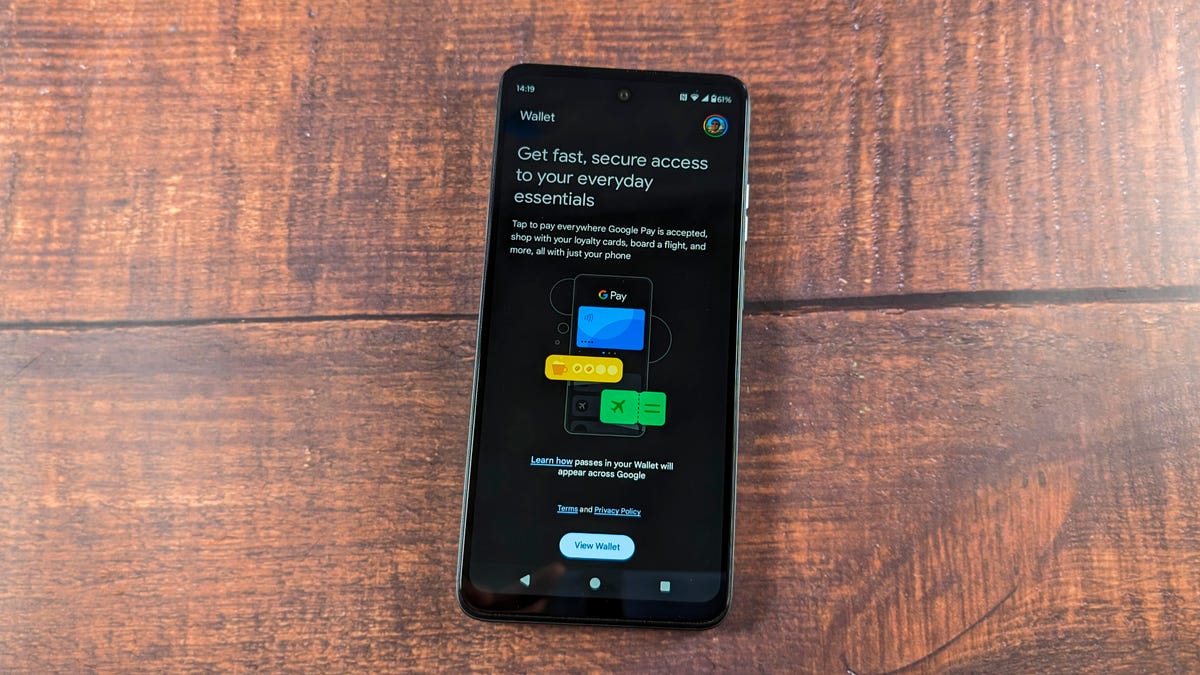
Contactless payments are available via the Moto G 5G.
Moto G 5G bottom line
The Moto G 5G checks a lot of boxes that I find compelling on a $200 phone. For instance, it’s great to see Motorola follow in Samsung’s lead after it brought NFC to the Galaxy A14. I’m also glad Motorola broke from the trend of plastic backs on cheaper phones by bringing a vegan leather material down to the Moto G 5G. The cameras take nice photos — as long as you aren’t trying to zoom — which makes it a very functionable option.
But just remember the phone’s performance will be limited by its memory. My advice? Turn on RAM boost right away to get the best experience. Otherwise, the phone should provide just enough performance for common tasks like texting, reading and listening to music.
It’s that performance limitation along with the short software update policy that makes the Moto G 5G difficult to recommend wholeheartedly. That said, the Moto G 5G shows Motorola can continue to improve its budget phones while simultaneously reducing the price. The Moto G 5G comes closer than ever to being a $200 phone I can strongly endorse, but it’s not quite there yet.
Moto G 5G (2024) vs. Moto G Power 5G (2024), Samsung Galaxy A14 5G
| Moto G 5G (2024) | Moto G Power 5G (2024) | Samsung Galaxy A14 5G | |
|---|---|---|---|
| Display size, resolution | 6.6-inch LCD; 1,612×720 pixels, 120Hz refresh rate | 6.7-inch LCD; 2,400×1,080 pixels, 120Hz refresh rate | 6.6-inch FHD+ LCD display, (1,400×1,080 pixels), 90Hz |
| Pixel density | 269 ppi | 391 ppi | 268 ppi |
| Dimensions (inches) | 6.5 x 3 x 0.3 in. | 6.6 x 3 x 0.3 in. | 6.6 x 3.07 x 0.36 in |
| Dimensions (millimeters) | 164.4 x 75 x 8.2mm | 167.2 x 76.4 x 8.5mm | 167.6 x 77.9 x 9.1 mm |
| Weight (ounces, grams) | 194g | 201g | 203 g (7.19 oz) |
| Mobile software | Android 14 | Android 14 | Android 13 |
| Camera | 50-megapixel (main), 2-megapixel (macro) | 50-megapixel (main), 8-megapixel (ultrawide) | 50-megapixel (main), 2-megapixel (macro), 2-megapixel (depth) |
| Front-facing camera | 8-megapixel | 16-megapixel | 13-megapixel |
| Video capture | FHD, 30fps | FHD, 60fps | 1080p at 30fps |
| Processor | Qualcomm Snapdragon 4 Gen 1 | Mediatek Dimensity 7020 | MediaTek MT6833V |
| RAM/Storage | 4GB + 128GB | 8GB + 128GB | 4GB + 64GB |
| Expandable storage | Yes, microSD | Yes, microSD | Yes |
| Battery/Charger | 5,000 mAh | 5,000 mAh | 5,000 mAh |
| Fingerprint sensor | Yes | Yes | Side |
| Connector | USB-C | USB-C | USB-C |
| Headphone jack | Yes | Yes | Yes |
| Special features | 18W wired charging, Dolby Atmos, NFC, water repellent, gesture controls, Moto Secure, RAM Boost | 30W wired charging, 15W wireless charging, Dolby Atmos, NFC, water repellent, gesture controls, Moto Secure, RAM Boost | 5G-enabled, NFC, 15W charging |
| Price off-contract (USD) | $200 | $300 | $200 |
| Price (GBP) | N/A | N/A | £179 |
| Price (AUD) | N/A | N/A | AU$379 |
How we test phones
Every phone tested by CNET’s reviews team was actually used in the real world. We test a phone’s features, play games and take photos. We examine the display to see if it’s bright, sharp and vibrant. We analyze the design and build to see how it is to hold and whether it has an IP-rating for water-resistance. We push the processor’s performance to the extremes, using standardized benchmark tools like GeekBench and 3DMark as well as our own anecdotal observations navigating the interface, recording high-resolution videos and playing graphically intense games at high refresh rates.
All the cameras are tested in a variety of conditions, from bright sunlight to dark indoor scenes. We try out special features like night mode and portrait mode and compare our findings against similarly priced competing phones. We also check out the battery life by using the phone daily as well as running a series of battery drain tests.
We take into account additional features, like support for 5G; satellite connectivity; fingerprint and face sensors; stylus support; fast charging speeds; and foldable displays, among others that can be useful. And we balance all this against the price to give you the verdict on whether that phone, whatever price it is, actually represents good value. Though these tests may not always be reflected in CNET’s initial review, we conduct follow-up and long-term testing in most circumstances.




















+ There are no comments
Add yours